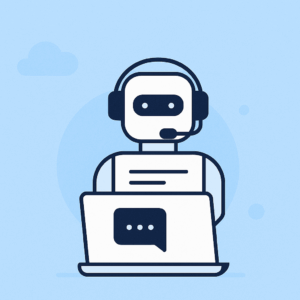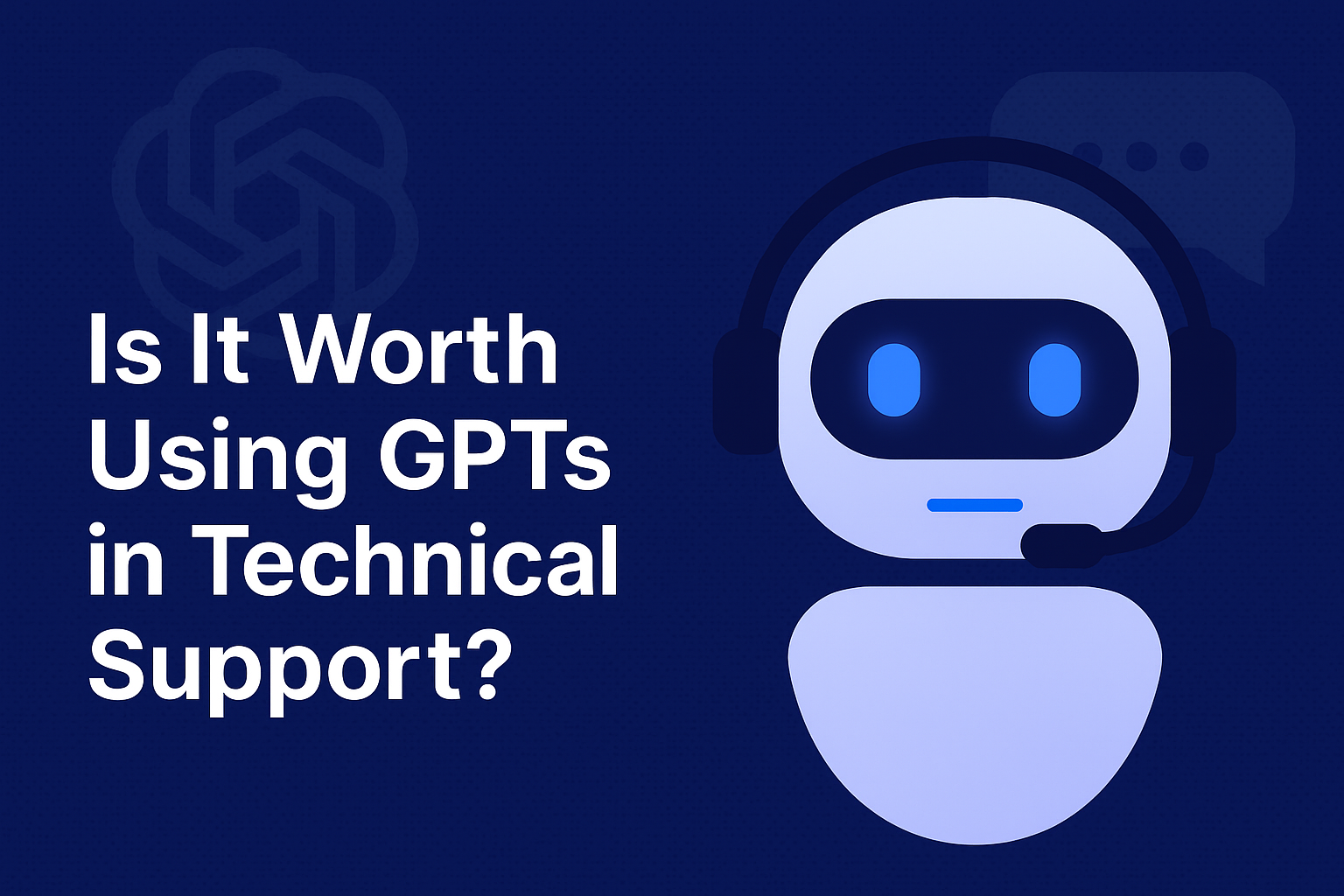Subtotal Q0.00
GPT in technical support is no longer science fiction—it’s business reality. As artificial intelligence continues to evolve, companies must decide if these tools are reliable enough for real-world IT operations. Artificial intelligence has radically transformed how companies interact with their users. Among the most disruptive tools are large language models like GPT (Generative Pre-trained Transformer). They generate human-like responses, analyze context, and even hold complex conversations. But in the field of technical support, can GPTs truly add value? Or are we trusting machines with tasks they’re not yet ready for?
Table of Contents
What Is GPT and How Can It Be Used in Technical Support?
GPT is a type of AI trained to predict and generate text based on context. In tech support, GPTs are used to:
- Answer frequently asked questions (FAQs)
- Guide users through basic procedures
- Automatically generate responses to common tickets
- Summarize logs and error messages
- Support multilingual communication
They differ from classic chatbots because they don’t follow rigid trees—they interpret language naturally and adjust dynamically to user input.
Advantages of Using GPT In Technical Support
24/7 Availability
GPT never sleeps. It can handle inquiries even outside of working hours.
Scalability
One GPT instance can handle thousands of users at once without compromising response time.
Cost Efficiency
Automating repetitive queries reduces the need for full-time human agents.
Immediate Response
Drastically reduces wait time for users.
Multilingual Capabilities
GPT can detect and respond in several languages, increasing accessibility.
Limitations You Should Not Ignore
Lack of Real Understanding
GPT can sound correct but offer inaccurate or even dangerous advice in technical contexts.
Generic Responses Without Integration
If not connected to internal systems (logs, user configs), its answers are based on assumptions.
Data Privacy Risks
Sensitive information should not be shared with public models without proper encryption and governance.
Impersonal Experience
Some users get frustrated when they notice they’re speaking to a machine.
Ongoing Maintenance
GPTs require training, updates, and review to remain useful and accurate.
When GPT Is a Good Fit
Tier 1 Support (Level 1): password resets, basic FAQs, usage guides.
Preventive Support: automated detection and reporting of common incidents.
Documentation Automation: summarize tickets, generate chat transcripts.
Internal Tool Integration: when GPT is trained on or connected to your own systems.
When You Should Rely on Humans
Complex network or infrastructure diagnostics
Security-related incidents
Regulatory or contractual cases
Premium customers that require a human touch
“GPTs are assistants, not replacements.”
The future of support is hybrid. Let AI handle the repetitive tasks, but keep expert humans in control of high-stakes or sensitive issues. the GPT in technical support has a lot of future and is possible the best ally we can have with our clients.
Use Cases for GPT in Technical Support
Some companies as Zendesk use GPT to summarize logs, propose next actions, or triage requests before passing them to a human technician. The AI can act as a first-level gatekeeper, improving ticket routing and reducing noise.
Future Outlook
As models improve, GPT in technical support could evolve into a collaborative assistant that not only answers, but also learns from patterns in your infrastructure. However, it must be managed wisely to avoid critical mistakes.
So as we see in many ways GPT models are here for make our lifes easier, not for replace all of us for robots.. at least for the moment, they are here for take out the repetitive work and one GPT model pretty well configured could be a very valuable partner
Ready to Automate Your Support?
Would you like to deploy a GPT assistant trained with your own documentation and support protocols?
Let’s build it together.
📧 Contact us at [email protected]
🌐 Visit us: https://cloudskeeps.com


